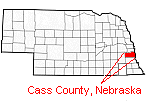
The Eudora Shale member of the Stanton Formation near the bottom of this section is the offshore sequence of the Stanton cyclothem. Thd Dyson Hollow bed marks the beginning of a marine regression and the Kiewitz Shale bed above shows a short pulse of deepening of the sea. It is in the Kiewitz in which greatest abundance and diversity of invertebrate fossils has been found in this cyclothem. Most of the invertebrates found in the Kiewitz Shale bed are small and have thin, unornamented shells that indicate deep, cold water. The regressive sequence is shown by the Stoner Limestone member of the Stanton Formation. The Rock Lake Formation is a red bed that is mostly a continental deposit that shows weathering and soil development. A new cyclothem begins near the top of the the Rock Lake where a sparse marine invertebrate fauna has been observed just below the Little Kaw Limestone member of the South Bend Formation. The Little Kaw is the transgressive limestone of this new cyclothem and the Gretna Shale is the offshore unit. At the very top of the section, the base of a limestone bed, the Kitaki member of the South Bend Formation can be observed. The Kitaki is the regressive limestone of this cycle. This section is the type section of the Gretna Shale member of the South Bend Formation, the Gretna having been named by Pabian and Strimple (1993). This exposure is situated at Schramm Park.
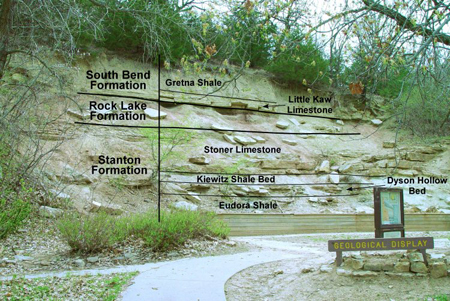
Echinoderms - Crinoids
The Kiewitz Shale bed is a localized unit that is exposed in a fairly small area along the lower Platte River Valley in southeastern Nebraska. The Kiewitz Shale bed is an off shore shale, one that was deposited in fairly deep, cold, poorly-oxygenated water according to the cyclothemic model of Heckel. Pabian and Strimple (1970, 1985) suggested that there were two kinds of crinoid assemblages in Nebraska. Deep, cold water assemblages were characterized by having smaller crinoids with thin, unornamented plates. Warm, shallow water assemblages were characterized by having larger crinoids with thick, ornamented plates. Heckel and Pabian (1981) demonstrated the compatibility of crinoids faunas with cyclic deposition models. Holterhoff (1988) carried this work on farther and demonstrated that crinoid assemblages from cold, deep, poorly-oxygenated water not only were smaller and had thinner plates but that they also had simpler arm structures and filtration fans for gathering food particles. The crinoids illustrated here have been collected over about a 50 year time span by W. D. "Ted" White, Roger Pabian, Bill Rushlau, and Pete Holterhoff.
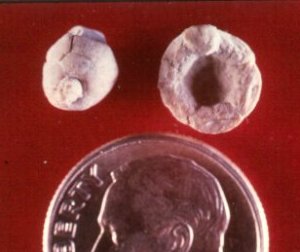
Alossocrinus bronaughi
Description: "Alossocrinus bronaughi" Strimple, dorsal cups.
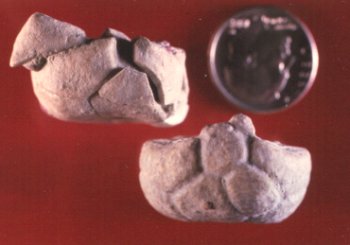
Aglaocrinus comactus
Description: "Aglaocrinus comactus" (Moore and Plummer), dorsal cups.
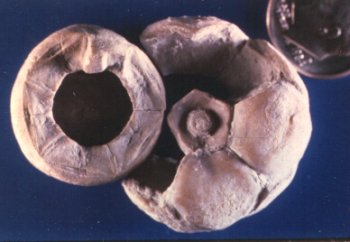
Aglaocrinus comactus
Description: "Aglaocrinus comactus" (Moore and Plummer), dorsal cups.
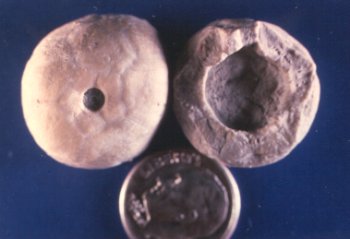
Aglaocrinus comactus
Description: "Aglaocrinus comactus" (Moore and Plummer), dorsal cups.
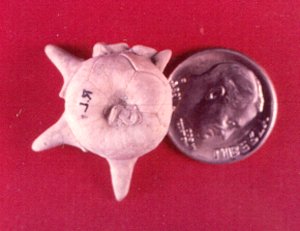
Delocrinus subhemisphericus
Description: "Delocrinus subhemisphericus" Moore and Plummer, partial crown.
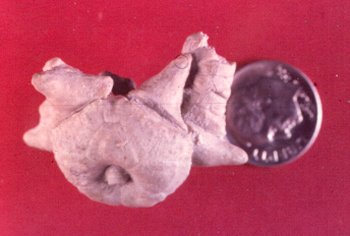
Delocrinus subhemisphericus
Description: "Delocrinus subhemisphericus" Moore and Plummer, partial crown.
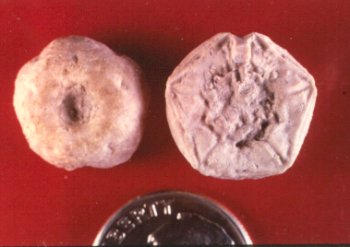
Delocrinus subhemisphericus
Description: "Delocrinus subhemisphericus" Moore and Plummer, dorsal cups.
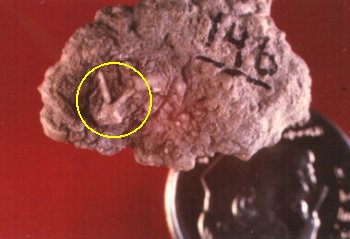
Erisocrinus typus
Description: "Erisocrinus typus" Meek and Worthen, juvenile crown.
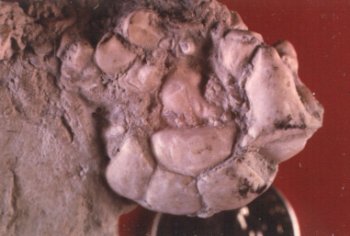
Glaukosocrinus
Description: "Glaukosocrinus" sp.
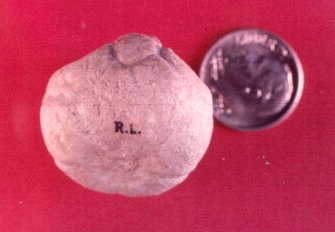
Parulocrinus blairi
Description: "Parulocrinus blairi" (Miller and Gurley), dorsal cups.
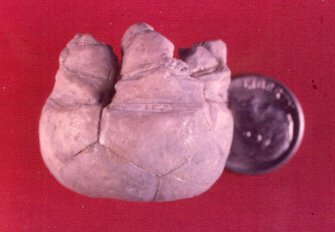
Parulocrinus blairi
Description: "Parulocrinus blairi" (Miller and Gurley), partial crown.
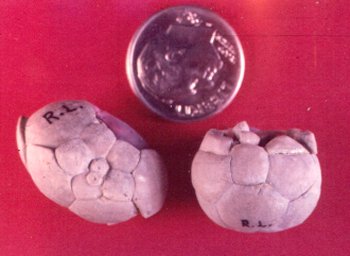
Polusocrinus rosae
Description: "Polusocrinus rosae", dorsal cups.
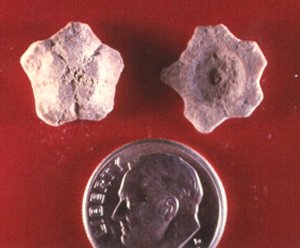
Schistocrinus sp. cf. confertus
Description: "Schistocrinus sp. cf. confertus" Moore and Plummer, infrabasal circlets.
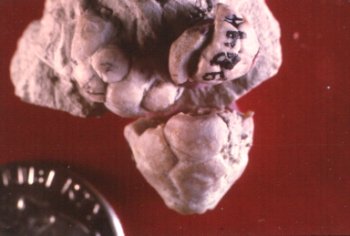
Terpnocrinus ellipticus
Description: "Terpnocrinus ellipticus" Pabian and Strimple, dorsal cups.
Echinoderms - Echinoids
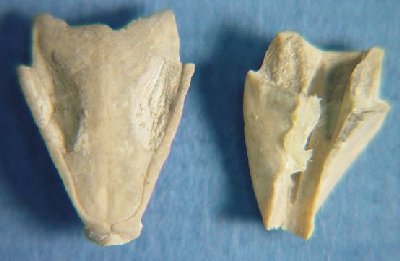
Archeocidaris sp. cf. A. dininnii
Description: "Archeocidaris" sp. cf. "A. dininnii" (White), two views of individual lantern rays. There five of these rays that terminate in sharp teeth and they form a pentagonal lantern. These are often seen misidentified as fish skulls.
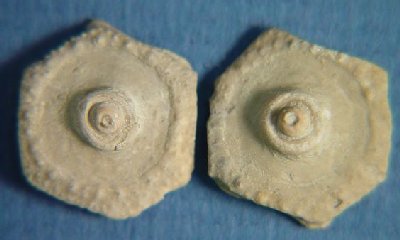
Archeocidaris sp. cf. A. dininnii
Description: "Archeocidaris" sp. cf. "A. dininnii" (White), these are interambulacral plates; the central process is an attachment for a long, prickly spine.
Cindarians (Corals) from the Kiewitz Shale
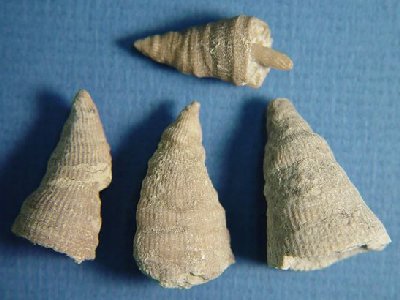
Lophophyllidium proliferum
Description: "Lophophyllidium proliferum" (McChesney).
Bryozoans (Moss Animals) from the Kiewitz Shale
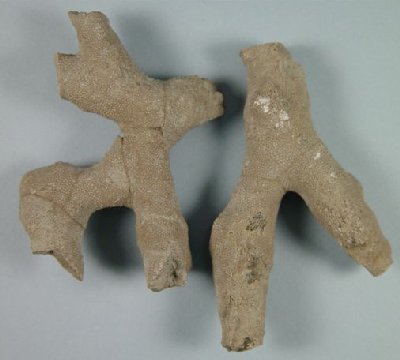
Cyclotrypa barbouri
Description: "Cyclotrypa barbouri" (Ulrich).
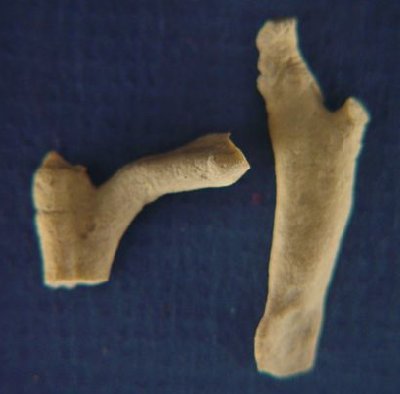
Meekopora prosseri
Description: "Meekopora prosseri" (Ulrich).

Fistulipora nodulifera
Description: "Fistulipora nodulifera" (Meek).
Bivalves (Clams) from the Kiewitz Shale

Archeocidaris sp. cf. A. dininnii
Description: "Archeocidaris" sp. cf. "A. dininnii" (White), two views of individual lantern rays. There five of these rays that terminate in sharp teeth and they form a pentagonal lantern. These are often seen misidentified as fish skulls.

Archeocidaris sp. cf. A. dininnii
Description: "Archeocidaris" sp. cf. "A. dininnii" (White), these are interambulacral plates; the central process is an attachment for a long, prickly spine.
Arthropods (jointed-legged animals) - Trilobites from the Kiewitz Shale
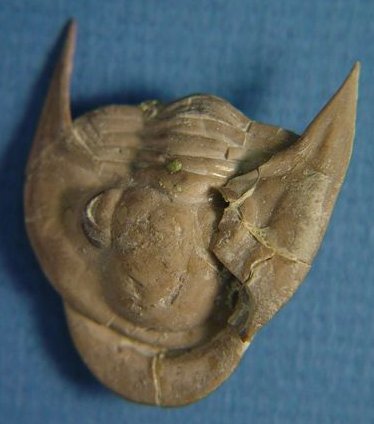
Ameura missouriensis
Description: "Ameura missouriensis" (Shumard), cephalon (head) of complete, enrolled example.
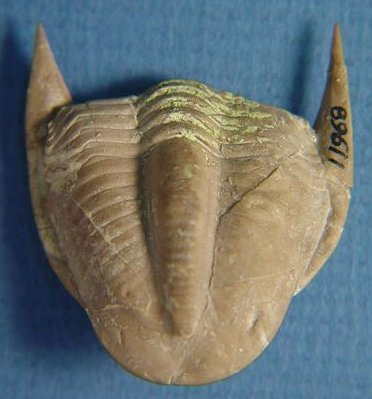
Ameura missouriensis
Description: "Ameura missouriensis" (Shumard), pygidium (tail) of complete, enrolled example.
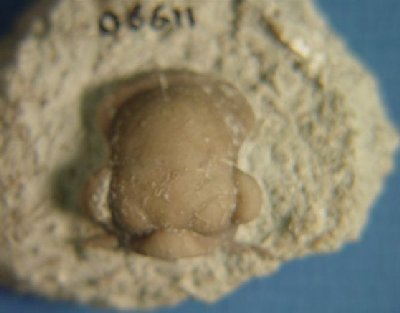
Ameura missouriensis
Description: "Ameura missouriensis" (Shumard), loose cranidium or axial part of cephalon.
Symmetric Gastropods
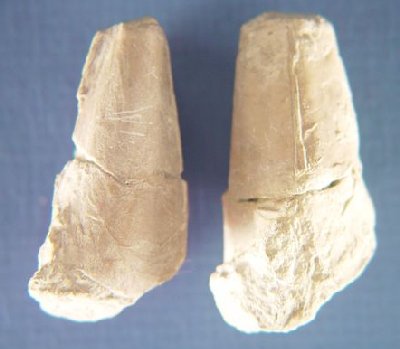
Razor Clam Aviculopinna sp.
Description: Razor Clam "Aviculopinna" sp. (Meek and Worthen).
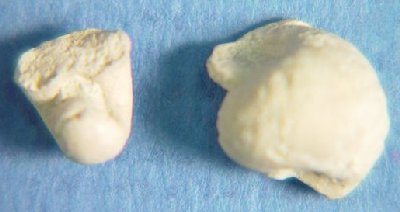
Bellerophon crassus
Description: "Bellerophon crassus" (Meek and Worthen).
Low-spired snails
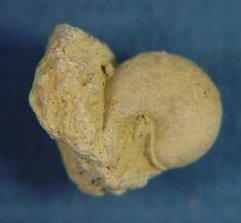
Anomphalus umbilicatus
Description: Anomphalus umbilicatus (Knight).
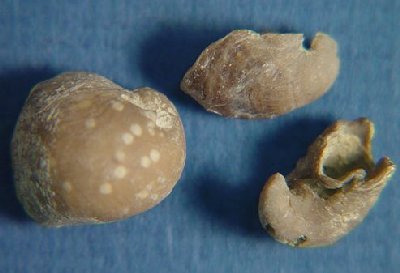
Commensal or parasitic gastropod, Platyceras parvum
Description: Commensal or parasitic gastropod, "Platyceras parvum" (Swallow).
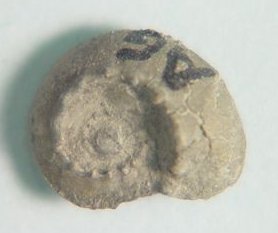
Trepospira discoidalis
Description: "Trepospira discoidalis" (Newell).
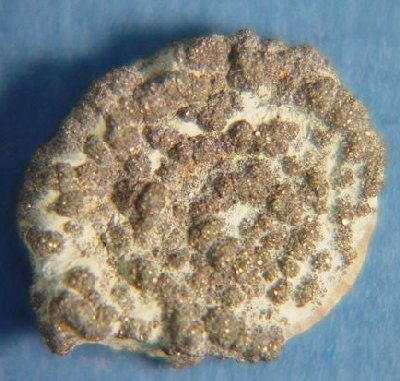
Straparollus (Amphiscapha) catilloides
Description: "Straparollus (Amphiscapha) catilloides" (Conrad). Note pyrite replacement and overgrowth.
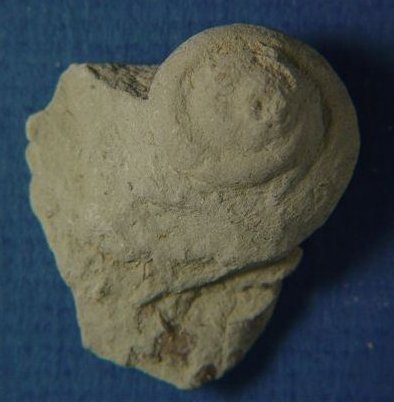
Straparollus (Straparollus) sp. cf. S. savagei
Description: "Straparollus (Straparollus) sp. cf. S. savagei" (Knight).
Medium-spired snails
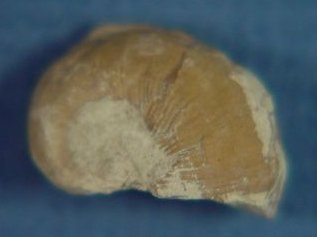
Naticopsis sp. cf. N. pricei
Description: "Naticopsis sp. cf. N. pricei "(Shumard).
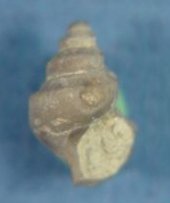
Pleurotomaria sp.
Description: "Pleurotomaria sp."
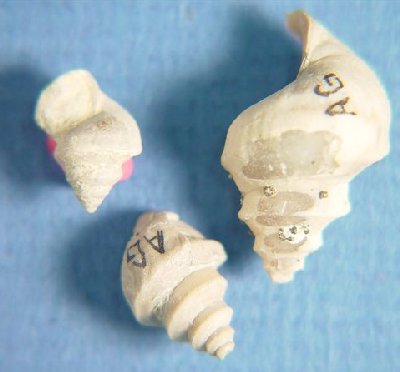
Pleurotomaria sp. cf. P. bilineata
Description: "Pleurotomaria sp. cf. P. bilineata" (Sayre).
High-spired snails
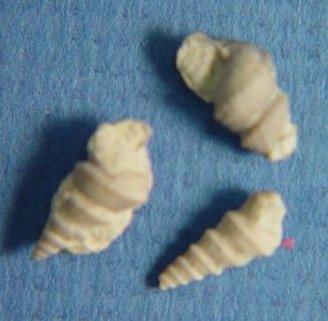
Donaldina sp. cf. D. stevensana
Description: "Donaldina sp. cf. D. stevensana" (Meek and Worthen).
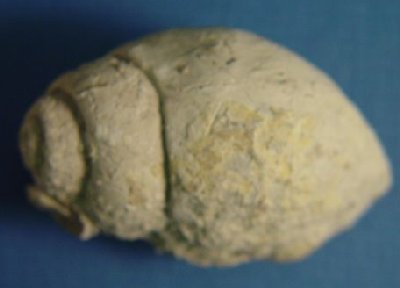
Girtyspira sp. cf. G. minuta
Description: "Girtyspira sp. cf. G. minuta" (Stevens).
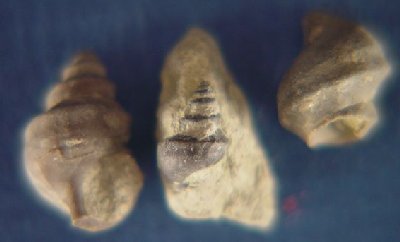
Hemizyga sp.
Description: "Hemizyga sp."
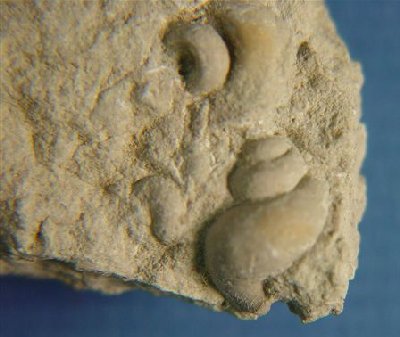
Hemizyga sp.
Description: "Hemizyga sp."
Bactritoids Cephalopods

Rugobactrites?
Description: "Rugobactrites?"
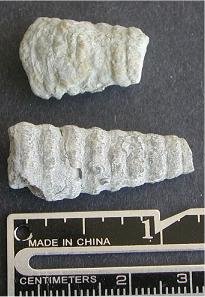
Not determined
Description: Genus and species not determined
Nautiloids (Straight)
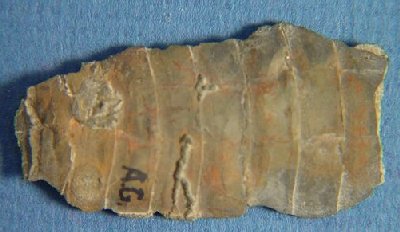
Pseudorthoceras sp.
Description: "Pseudorthoceras sp."
Nautiloids (coiled)
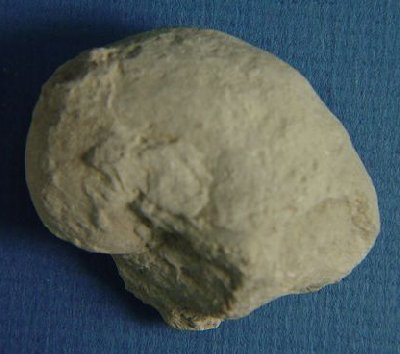
Coloceras sp.
Description: "Coloceras sp."
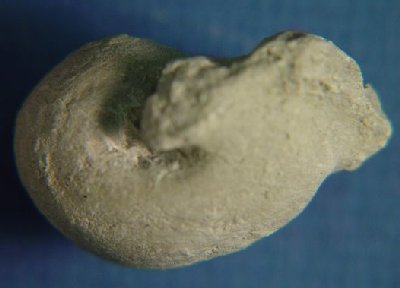
Ephippioceras divisum
Description: "Ephippioceras divisum" (White and St. John).
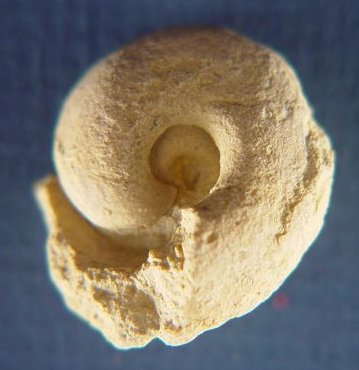
Ephippioceras ferratum
Description: Ephippioceras ferratum" (Cox)
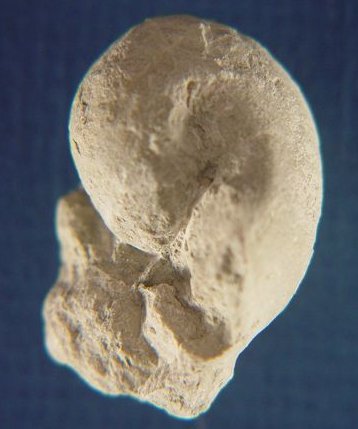
Ephippioceras ferratum
Description: "Ephippioceras ferratum" (Cox)
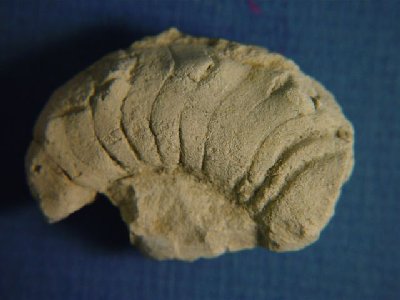
Metacoceras cravatiforme
Description: "Metacoceras cravatiforme" (Hyatt).
Ammonoids (coiled cephalopods with complex sutures)
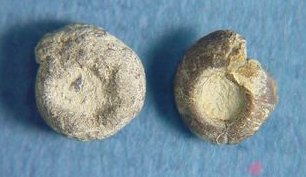
Eoasianites sp. cf. E. welleri
Description: "Eoasianites sp. cf. E. welleri" (Smith).
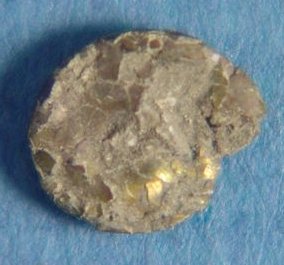
Eoasianites sp. cf. E. angulatus
Description: "Eoasianites" sp. cf. "E. angulatus" (Miller and Furnish), crushed specimen.
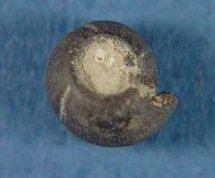
Eoasianites sp. cf. E. angulatus
Description: "Eoasianites" sp. cf. "E. angulatus" (Miller and Furnish), intact specimen.